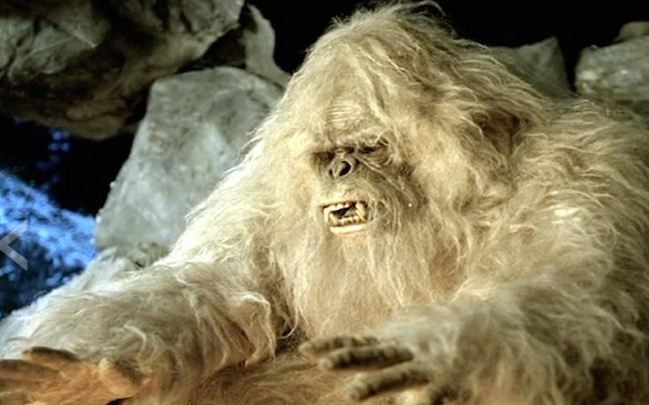A scientific finding last year that claimed the legendary Yeti or Abominable Snowman might possibly be an extinct species of polar bear has again been challenged as incorrect.
In 2014, Oxford University professor of human genetics Bryan Sykes and his colleagues said they had linked "yeti" hair samples found in the Himalayas to the jawbone of an ancient polar bear (Ursus maritimus) that lived in Norway.
Sykes' team looked at two hair samples from the Himalayan region. One sample came from an unidentified animal walking on its hind legs shot by a hunter 40 years ago in northern India. The other sample was found in Bhutan in a high-altitude bamboo forest.
The team said it was likely the hairs came from "a previously unrecognized bear species," living in the Himalayas. They surmised the species might have been a hybrid descendent of Ursus maritimus and the brown bear (Ursus arctos) of the Himalayas and could have inspired the legend of the yeti, said LiveScience.
The team extracted RNA from the hair samples and said after analysis the RNA was most similar to the 40,000 year-old genetic signature of an extinct breed of polar bear. They suggested there might be an undiscovered bear species surviving in the vast Himalayan mountains, said NBC News.
Two scientists begged to differ, however, and published their findings in the journal, ZooKeys, on March 16.
"There is essentially no reason to believe that they (the hairs) belong to a species other than the brown bear," said Eliecer Gutierrez, a postdoctoral fellow of evolutionary biology at the Smithsonian's National Museum of Natural History in Washington, D.C. and one of the authors of the new study
Gutierrez and his colleague re-examined Sykes' findings after Gutierrez became skeptical of it after he noticed Sykes used only used a fragment of a gene to identify the species.
"We made this discovery that basically that fragment of DNA is not informative to tell apart two species of bears: the brown bear and [modern-day Alaskan] polar bear," said Gutiérrez after he and his colleague looked-up the genetic sequence of the two hair samples in GenBank, a publicly available database of DNA sequences.
Gutierrez said that as the polar bear doesn't live in the Himalayas, the hair samples most likely belongs to the Himalayan brown bear.
Gutierrez's study is the second to discredit Sykes' research. In a letter published in ZooKeys in 2014, two researchers showed Sykes' team had not sufficiently analyzed their "yeti" data.
"Once they had determined that two of their samples were a match to a polar bear, they should have run further analyses on the extracted DNA to look at other regions of the mitochondrial genome (DNA passed down by the mother) in order to double-check this controversial result," said one of the authors, Ceiridwen Edwards, a researcher in ancient DNA studies at the University of Oxford.
"Instead, after (incorrectly) establishing a direct link to a 40,000-year-old polar bear sequence, they then used this misinformation in the publicity for the paper," Edwards told Live Science.




























